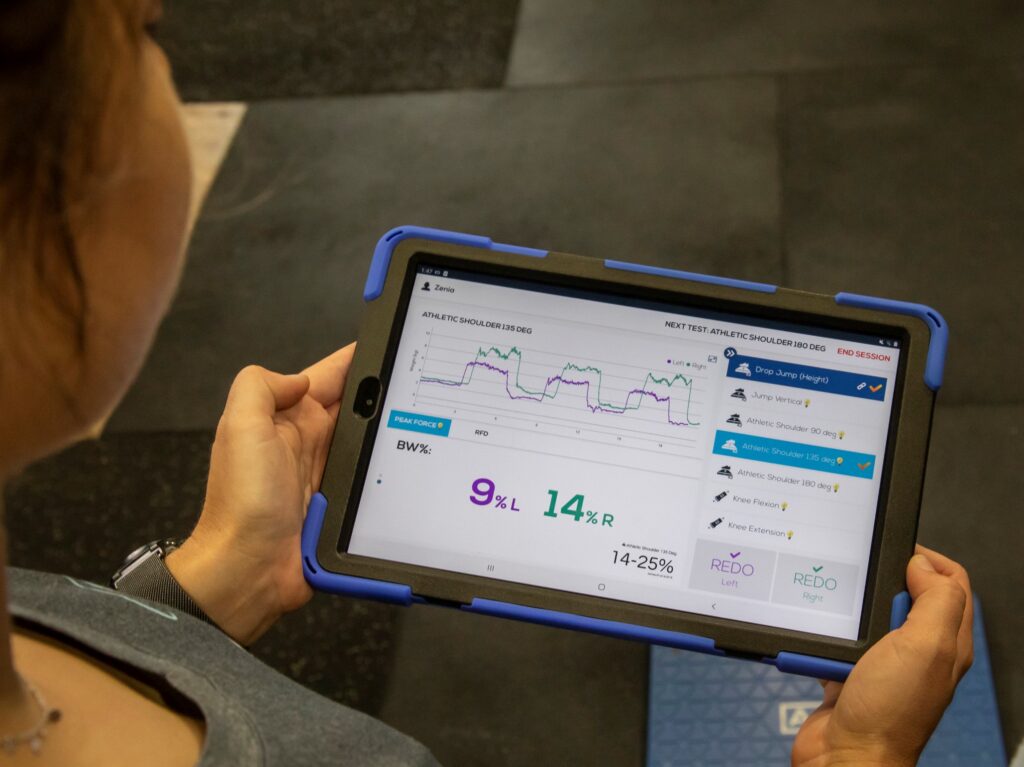When it comes to exercise, it can be easy to get caught up in the routine of your chosen workout without considering whether it’s actually effective for your body. This is where testing and retesting come in. By periodically evaluating your fitness progress through standardised tests, you can ensure that your exercise program is working for you and helping you achieve your goals. In this article, we’ll explore the benefits of testing and retesting during exercise and how it can help you achieve your desired level of fitness.

Monitoring Progress
One of the most significant benefits of testing and retesting during exercise is the ability to monitor your progress towards fitness goals. By using standardised tests and tracking your results over time, you can see whether you’re making progress towards your desired level of fitness. This is crucial for ensuring continued progress towards your fitness goals, as explained by Baechle and Earle (2008). By having a consistent measurement of your performance, it’s easier to track your progress over time and adjust your exercise program accordingly.

Identifying Weaknesses
Testing and retesting during exercise can also help you identify weaknesses in your fitness program. By using standardised tests, you can identify areas where you need to improve your performance. This can help you create a more well-rounded and effective exercise program that targets all areas of your fitness. As Heyward (2018) explains, standardised tests provide a consistent measurement of performance, making it easier to identify areas of improvement.
By regularly evaluating your progress, you can ensure that your exercise program is working for you and not against you.
Injury Prevention
Another significant benefit of testing and retesting during exercise is injury prevention. By monitoring your progress and adjusting your exercise program accordingly, you can avoid overtraining and prevent injury. Bompa and Carrera (2015) recommend incorporating testing into a periodized training program to optimise performance and prevent injury. By regularly evaluating your progress, you can ensure that your exercise program is working for you and not against you.

Motivation
Testing and retesting can also provide motivation towards achieving your fitness goals. By monitoring changes in your body composition and overall fitness levels, you can see progress towards your fitness goals. As Wilmore, Costill, and Kenney (2015) recommend, seeing improvements in performance can provide a sense of accomplishment and motivate you to continue working towards your fitness goals. Regular testing and retesting can also help you stay accountable and committed to your exercise program.
Effective Testing and Retesting
It’s essential to use standardised tests and track your results over time to ensure effective testing and retesting. The National Strength and Conditioning Association (2012) emphasises the importance of using standardised tests and tracking progress to identify weaknesses and monitor improvements. Tests should align with your fitness goals and provide a consistent measurement of performance. It’s also crucial to evaluate your progress regularly and adjust your exercise program accordingly.
Conclusion
In conclusion, testing and retesting during exercise are crucial for monitoring progress, identifying weaknesses, preventing injury, and providing motivation. By incorporating standardised tests and tracking your results over time, you can ensure that your exercise program is working for you and helping you achieve your desired level of fitness. Remember to use effective testing and retesting methods and evaluate your progress regularly to adjust your exercise program accordingly. By doing so, you’ll be on your way to achieving your fitness goals and improving your overall health and well-being.
- American College of Sports Medicine (2018) states that testing and retesting during exercise is an essential part of developing a safe and effective exercise program
- Baechle and Earle (2008) explain that tracking progress over time is crucial for ensuring continued progress towards fitness goals
- Bompa and Carrera (2015) recommend incorporating testing into a periodized training program to optimise performance and prevent injury
- Foss and Keteyian (2012) highlight the importance of monitoring progress to ensure that exercise is having the desired physiological effects
- Heyward (2018) explains that standardised tests provide a consistent measurement of performance, making it easier to track progress over time
- McArdle, Katch, and Katch (2015) recommend testing and retesting to monitor changes in cardiovascular and muscular fitness
- The National Strength and Conditioning Association (2012) emphasises the importance of using standardised tests and tracking progress over time to identify weaknesses and monitor improvements.
- Wilmore, Costill, and Kenney (2015) recommend testing and retesting to monitor changes in body composition and overall fitness levels.






